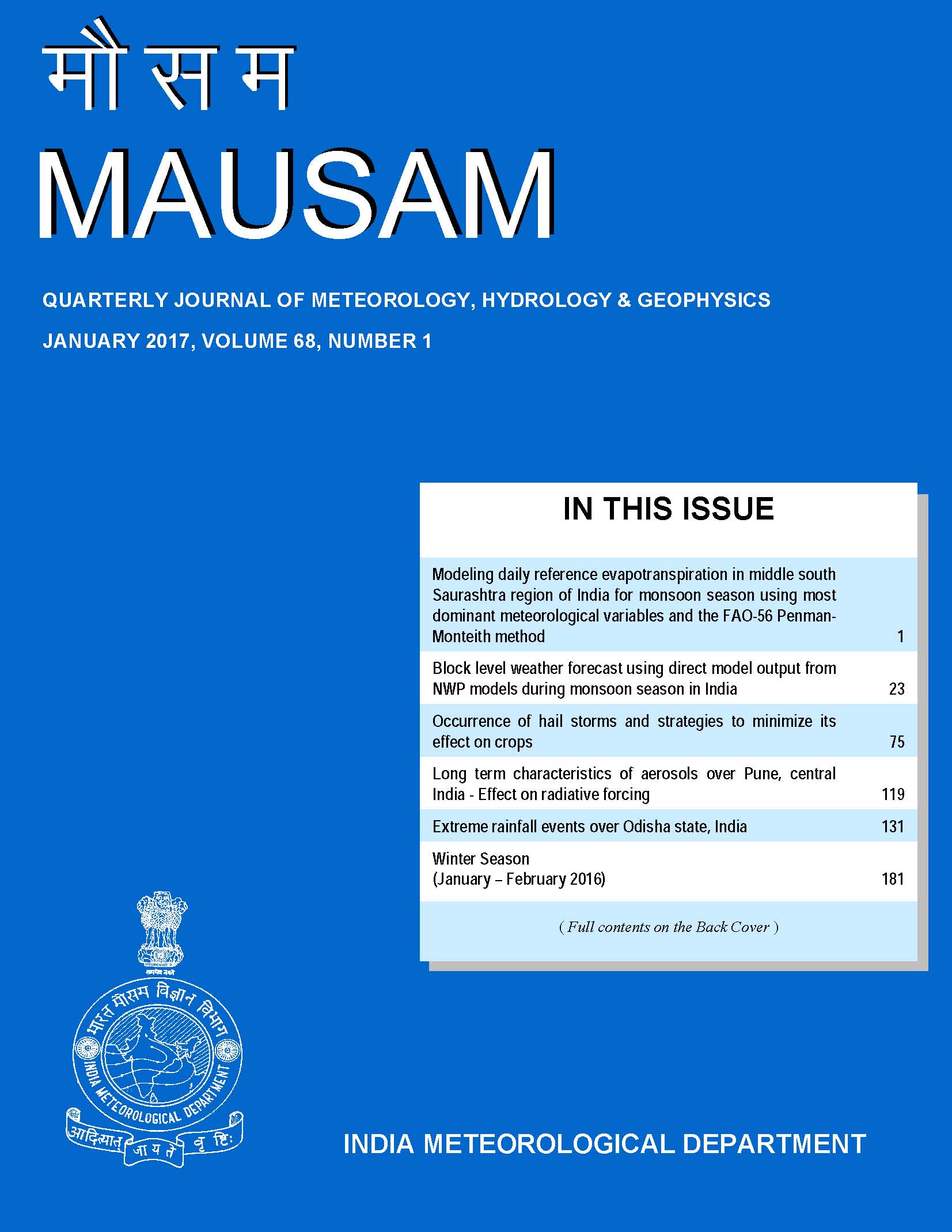Long term characteristics of aerosols over Pune, central India - Effect on radiative forcing
DOI:
https://doi.org/10.54302/mausam.v68i1.439Abstract
Sun photometer (MICROTOPS II) and Sun-sky radiometer (POM-02, Prede) data for 2003-2013 period are used to study the optical and temporal characteristics of aerosols and their effect on radiative forcing over Pune, central India. The daily mean aerosol optical thickness at 500 nm (AOT500) and Angstrom exponent for the study period were 0.77 ± 0.22 0.92 ± 0.24 respectively. Short wave aerosol radiative forcing (ARF) computed for the year 2013 using Santa Barbara Discrete-ordinate Atmospheric Radiative Transfer (SBDART) model, showed ARF at surface (SUF) and top of the atmosphere (TOA) was negative indicating dominance of scattering type aerosols. AOT, single scattering albedo (SSA) and asymmetry parameter (ASP) derived from Sun sky radiometer showed more AOT and ASP and less SSA during April / May to August indicating prevalence of absorbing soil dust in this period. Atmospheric heating varied from +14.3 to 20.5 W/m2 and was more in monsoon (+ 35.4 W/m2). ARF at SUF was found to be a strong function of AOT500 (R2= 0.90). The radiative forcing efficiency inferred to scattering nature of aerosols at SUF (-66.2 W/m2/ AOT), TOA (- 0.2 W/m2 / AOT) and atmosphere (ATM) (+ 66.0 W/m2 /AOT). The atmospheric heating rates varied from 0.94 K/day in post monsoon to 2.78 K/day in monsoon. Monthly, seasonal and diurnal variability of AOT500 and with role of meteorological factors are also discussed.
Downloads
Published
How to Cite
Issue
Section
License
Copyright (c) 2021 MAUSAM

This work is licensed under a Creative Commons Attribution-NonCommercial 4.0 International License.
All articles published by MAUSAM are licensed under the Creative Commons Attribution 4.0 International License. This permits anyone.
Anyone is free:
- To Share - to copy, distribute and transmit the work
- To Remix - to adapt the work.
Under the following conditions:
- Share - copy and redistribute the material in any medium or format
- Adapt - remix, transform, and build upon the material for any purpose, even
commercially.



